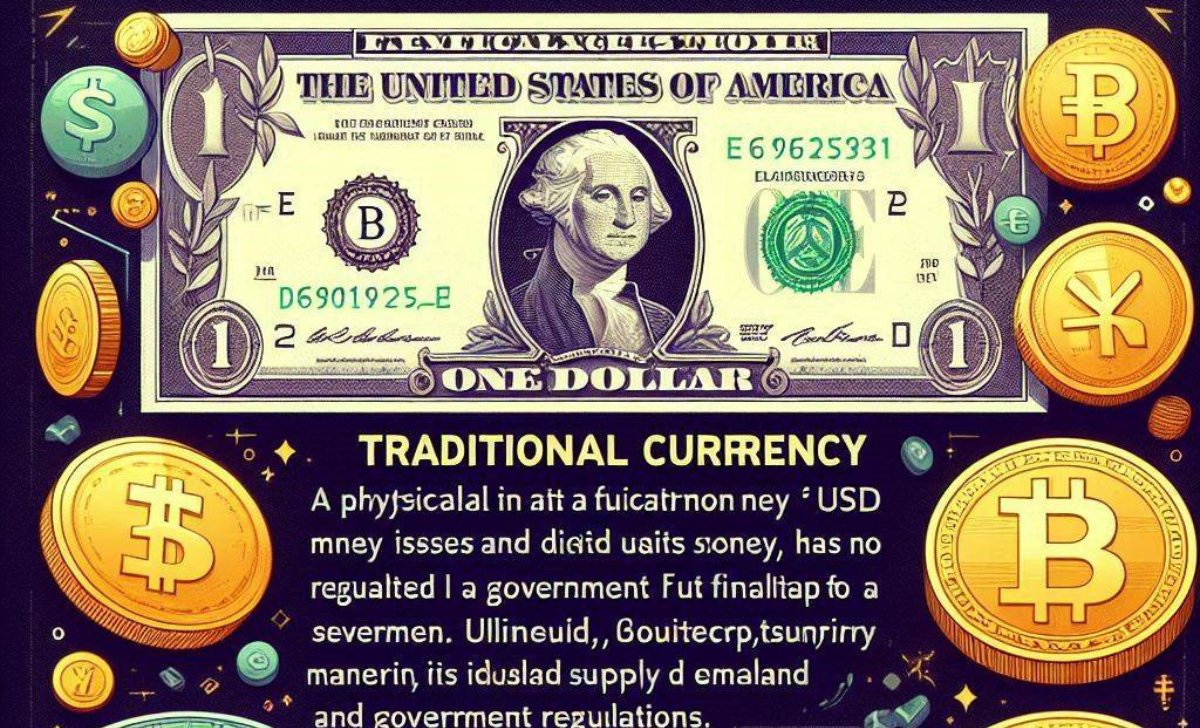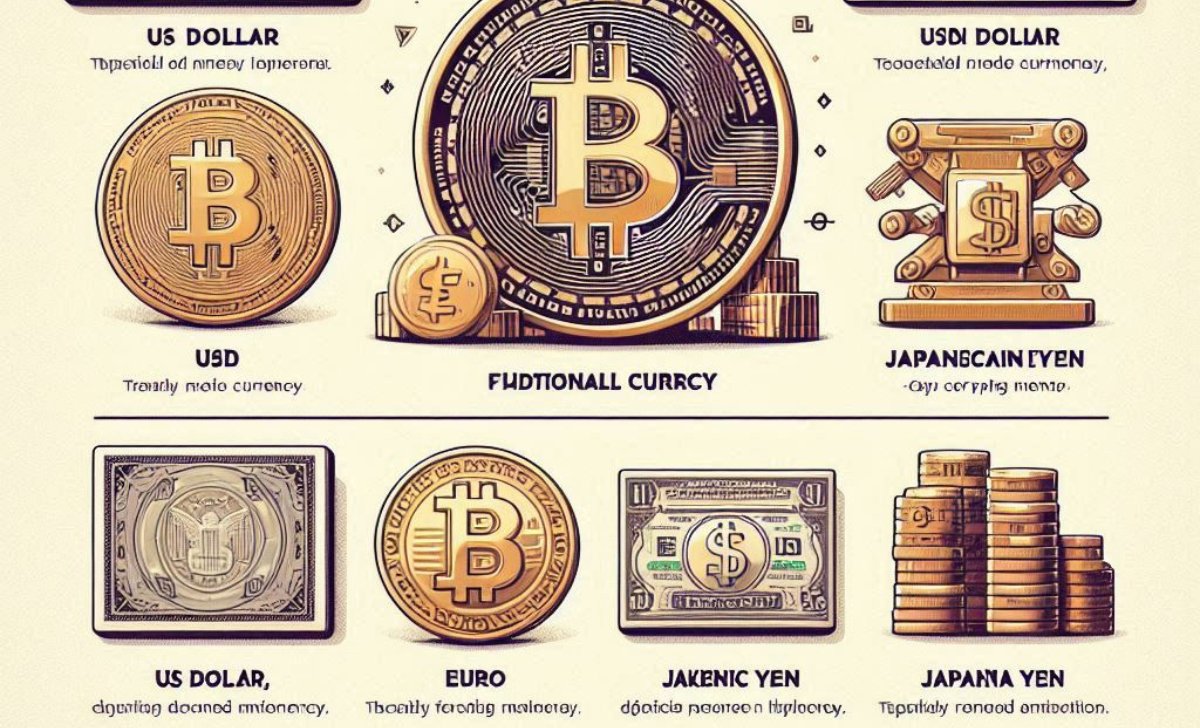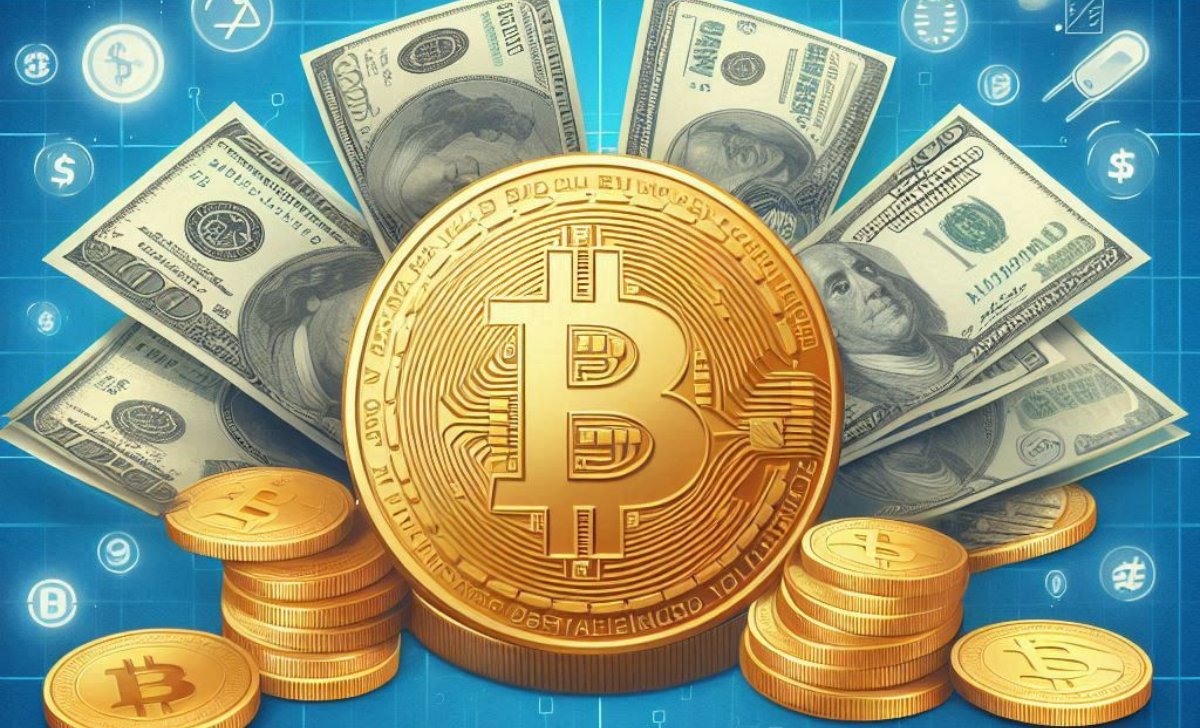Cryptocurrency vs. Traditional Currency has become a major debate in the modern financial world as digital assets continue to gain popularity. While cryptocurrency offers decentralization, fast transactions, and lower fees, traditional currency remains stable, universally accepted, and government-regulated.
To better understand their differences, this article from TopCoin9 explores key aspects such as their definitions, pros and cons, and whether cryptocurrency can eventually replace traditional money!
What is Cryptocurrency?

Understanding Cryptocurrency vs. Traditional Currency is key for anyone entering digital finance. Cryptocurrency is a decentralized digital currency built on blockchain technology, free from government control. Transactions are secured and recorded on a public ledger using cryptographic techniques, ensuring transparency.
One of the main appeals of cryptocurrency is its ability to facilitate peer-to-peer transactions without intermediaries like banks. This allows for faster and often cheaper cross-border payments. Bitcoin, the first and most well-known cryptocurrency, was introduced in 2009 by an anonymous entity known as Satoshi Nakamoto. Since then, thousands of cryptocurrencies have emerged, each offering unique functionalities.
Key characteristics of cryptocurrency:
- Decentralization: No central authority controls it.
- Blockchain-based: Transactions are stored securely on a digital ledger.
- Limited supply: Many cryptocurrencies, like Bitcoin, have a capped supply, preventing inflation.
- High volatility: Prices fluctuate dramatically based on demand and market speculation.
While cryptocurrency presents many exciting opportunities, traditional currency remains the dominant medium of exchange. Let’s explore what makes it different.
What is Traditional Currency?

Traditional currency, also known as fiat money, is physical or digital money issued and regulated by a government. Examples include the US Dollar (USD), Euro (EUR), and Japanese Yen (JPY). Unlike cryptocurrencies, fiat money has no intrinsic value; its worth is determined by supply, demand, and government regulations.
Central banks, such as the Federal Reserve (USA) or European Central Bank (ECB), manage the supply of traditional currency to ensure economic stability. These institutions implement monetary policies, such as adjusting interest rates and controlling inflation, to maintain the value of their respective currencies.
Key features of traditional currency:
- Government-backed: Issued and regulated by central authorities.
- Legal tender: Accepted for all transactions within a country.
- Stable value: Less volatile compared to cryptocurrencies.
- Physical & digital form: Available as cash, bank deposits, and digital payments.
Despite its stability and widespread acceptance, traditional currency has some limitations, especially when it comes to cross-border transactions and inflation control. This brings us to the core differences between cryptocurrency and fiat money. Let’s explore that in the next section!
Key Differences Between: Cryptocurrency vs. Traditional Currency
To better understand Cryptocurrency vs. Traditional Currency debate. Let’s compare their fundamental differences:
| Feature | Cryptocurrency | Traditional Currency |
| Control | Decentralized | Centralized by governments/banks |
| Supply | Limited (e.g., Bitcoin has a cap of 21M coins) | Unlimited, subject to inflation |
| Security | Highly secure (Blockchain encryption) | Vulnerable to counterfeiting and inflation |
| Transaction Speed | Fast (seconds to minutes) | Slower (especially for international transfers) |
| Acceptance | Limited (varies by region) | Universally accepted |
| Volatility | High (prices fluctuate significantly) | Generally stable |
| Intermediaries | No intermediaries | Banks and financial institutions required |
While cryptocurrency offers decentralization and lower transaction costs, traditional money remains more stable and widely accepted. However, as more investors look to buy crypto for its potential growth, both forms of currency continue to coexist, each with its own advantages and challenges. Let’s take a closer look.
Pros and Cons of Cryptocurrency

When comparing cryptocurrency vs. traditional money, it’s essential to weigh the benefits and drawbacks of digital currencies. Below are the key pros and cons of cryptocurrency.
Pros
- Decentralization: Cryptocurrency operates without government control, reducing the risk of financial manipulation. This gives users full ownership of their assets without interference from central authorities.
- Lower Transaction Fees: With no banks or intermediaries involved, transaction costs are significantly lower. This makes cross-border payments more affordable and efficient.
- Fast Transactions: Payments are processed within minutes, regardless of location. Unlike traditional banking, there are no long processing times or waiting for business hours.
- Transparency & Security: All transactions are recorded on a blockchain, ensuring data integrity and preventing fraud. Encryption technology makes it nearly impossible to alter or counterfeit transactions.
- Potential for High Returns: Cryptocurrencies have shown exponential growth, providing lucrative investment opportunities. Many early adopters have seen massive gains, though risks remain.
Cons
- Price Volatility: Cryptocurrency prices can rise or fall drastically within short periods. This unpredictability makes it a risky investment and less reliable for everyday transactions.
- Limited Adoption: While growing, cryptocurrency is still not widely accepted for payments. Many businesses and individuals prefer traditional money due to its stability and ease of use.
- Regulatory Uncertainty: Some governments have imposed strict regulations or outright bans on cryptocurrency. This creates uncertainty for investors and businesses looking to adopt digital assets.
- Irreversible Transactions: Once a cryptocurrency transaction is sent, it cannot be reversed. If funds are mistakenly transferred to the wrong address, there is no way to recover them.
- Crypto Scams: The rise of digital assets has also led to an increase in scams, with fraudulent projects and phishing attacks targeting investors.
Despite these risks, many believe that cryptocurrency has the potential to reshape the financial system. But how does it compare to traditional money? Find out more in the next section!
Pros and Cons of Traditional Currency

When evaluating crypto vs. traditional money, it’s important to consider the advantages and disadvantages of traditional currency. Below are the key pros and cons of using fiat money.
Pros
- Stable Value: Traditional money experiences far less volatility than cryptocurrency. This stability makes it more reliable for everyday spending and long-term savings.
- Universal Acceptance: Fiat currency is recognized and accepted in all transactions within its issuing country. Unlike crypto, it doesn’t require special platforms or wallets to use.
- Government Regulation: Central banks oversee money supply and inflation, ensuring economic stability. This regulation helps prevent extreme fluctuations in value.
- Physical & Digital Use: Traditional money is available in both physical cash and digital bank transfers. This flexibility makes it accessible for all types of transactions.
Cons
- Inflation Risks: Governments can print more money, which can lead to inflation and reduce purchasing power. Over time, this can erode the value of savings.
- High Transaction Fees: Banks and financial institutions charge fees for services like transfers, loans, and currency exchange. These costs add up, especially for international transactions.
- Slow Processing: Cross-border payments and banking transactions can take days to complete. Processing delays occur due to bank regulations and verification procedures.
- Counterfeiting Issues: Physical currency is vulnerable to counterfeiting and fraud. Despite security measures, fake bills still circulate in many economies.
As both forms of currency have their pros and cons, the ultimate question arises: Can cryptocurrency replace traditional currency? Find out more in the next content!
Can Cryptocurrency Replace Traditional Currency?

The idea of cryptocurrency replacing traditional money is highly debated. While digital currencies offer numerous advantages, there are several obstacles preventing mass adoption.
Challenges for Cryptocurrency as a Replacement
- Regulatory Barriers: Many governments are hesitant to legalize crypto due to potential risks in taxation and financial control.
- Scalability Issues: Current blockchain technology faces limitations in handling large-scale transactions.
- Adoption Gap: Businesses and individuals still prefer fiat money for everyday transactions.
- Security Concerns: Hacking risks and lost private keys can result in permanent loss of funds.
However, some nations are embracing crypto profit. For example, El Salvador became the first country to adopt Bitcoin as legal tender in 2021. Additionally, Central Bank Digital Currencies (CBDCs) are being explored as a middle ground between fiat and crypto.
While cryptocurrency may not fully replace traditional currency in the near future, it is undoubtedly influencing the way we think about money and financial transactions.
Conclusion
In the Cryptocurrency vs. Traditional Currency debate, both forms of money have unique advantages and challenges. Understanding their differences helps you make informed financial decisions in this evolving digital age. Stay tuned for our latest articles to keep up with the future of finance!

Ethan Carter, a seasoned crypto analyst with 7+ years of experience, has a deep understanding of market trends, DeFi, and blockchain technologies. His expert insights and market forecasts have helped thousands of traders and investors make informed decisions.
Email: [email protected]












